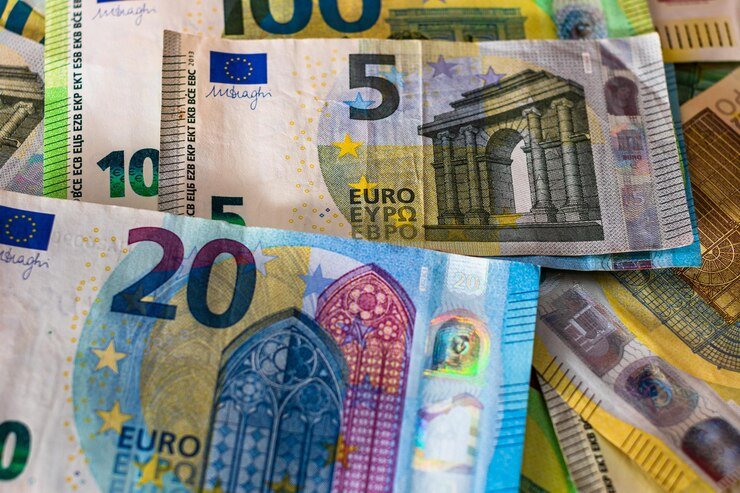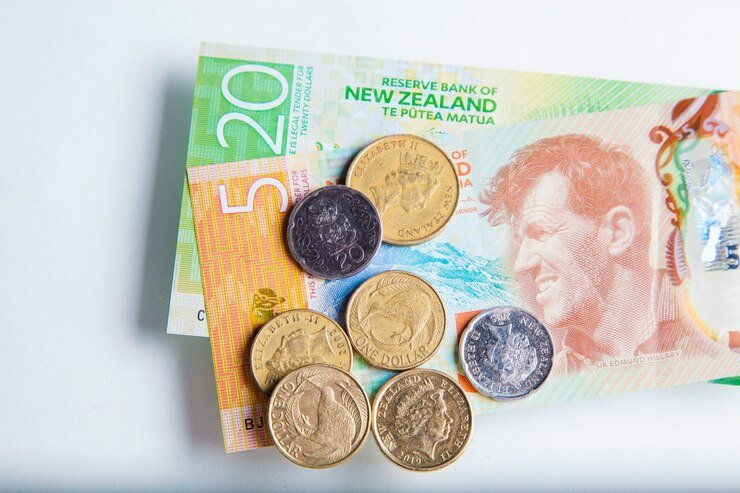EUR/USD Price Forecast: Consolidation Near Multi-Week Highs with Bullish Potential
The EUR/USD currency pair is correcting around a multi-week high, just below the psychological 1.0500 level, after its sharp appreciation last week. The technical environment still favors bulls, with the 38.2% Fibonacci retracement level and positive oscillators offering scope for further upside. A close above 1.0545-1.0555 may set the stage for further gains towards 1.0600 and higher. But if the pair does not hold 1.0465, it might lead to a drop to 1.0400 and the mid-1.0300s, with momentum returning to the bears. Traders can monitor key support and resistance levels for possible breakout or retracement strategies. KEY LOOKOUTS • A breakout above this confluence area, including the 50% Fibonacci level and 100-day EMA, could propel EUR/USD towards the 1.0600 level. • A firm breakdown below this 38.2% Fibonacci retracement level may indicate weakness, pulling EUR/USD down to 1.0400 and mid-1.0300s in the near future. • A weaker US Dollar still favors the pair’s upward momentum, but any reversal of USD strength may limit gains and initiate fresh falls. • If EUR/USD breaks above the December 2024 swing high, it could confirm an extension of the bullish trend, paving the way for a long-term recovery from multi-year lows. The EUR/USD currency pair is in a period of consolidation at its multi-week high, just below the 1.0500 level as investors weigh their next move. The technical bias is bullish, and a possible breakout above the resistance zone of 1.0545-1.0555, which contains the 50% Fibonacci retracement level as well as the 100-day EMA, may push the pair to 1.0600 and 1.0630. However, a drop below the support level of 1.0465 may change the trend in favor of the bears, driving the pair lower to 1.0400 and the mid-1.0300s. The performance of the US Dollar continues to be a prime driver, and any revival in greenback demand has the potential to cap EUR/USD gains or initiate a slide. These levels need to be watched closely by traders to understand the pair’s next move. The EUR/USD pair consolidates below 1.0500, with bullish potential if it breaks above 1.0545-1.0555, heading towards 1.0600. A fall below 1.0465 could lead to further losses towards 1.0400. The US Dollar’s movement continues to be the most important factor in deciding the pair’s next direction. • EUR/USD is trapped in a narrow range close to a multi-week high, unable to break above the crucial 1.0500 psychological level. • Upbeat oscillators and a move above the 38.2% Fibonacci retracement level are in favor of additional upside momentum. • A breakout above this confluence area (50% Fibonacci retracement + 100-day EMA) may drive EUR/USD towards 1.0600 and 1.0630. • Sustaining above this level is vital for maintaining bullish momentum; a break below could initiate losses towards 1.0400 and mid-1.0300s. • Softer US Dollar is bullish for EUR/USD, but rebound in USD strength could cap further upside. • Failure of support at 1.0465 could lead to increased selling pressure, focusing attention on 1.0200 in a further bearish continuation. • Market participants need to watch price closely around key levels to validate a breakout above 1.0545 or a breakdown below 1.0465 for clear trend direction. The EUR/USD currency pair remains cautiously bullish with solid technical support at 1.0465 serving as an important level to the buyers. A move through the 1.0545-1.0555 resistance area, including the 50% Fibonacci retracement and 100-day EMA, may validate further higher potential. With the pair trading above this band, the following targets would include 1.0600 and 1.0630, where the 61.8% Fibonacci retracement lies. A successful break above these levels could prolong the recent upturn to 1.0700, further bolstering the uptrend. Optimistic momentum indicators such as the RSI and MACD favor this case, indicating bulls might try to regain higher levels in the short term. EUR/USD Daily Price Chart TradingView Prepared by ELLYANA But the bear risks persist if EUR/USD cannot hold the 1.0465 support level. A decisive break below this point could signal weakness, dragging the pair toward the 1.0400 psychological level and further down to the mid-1.0300s, which align with the 23.6% Fibonacci retracement level. A deeper sell-off could see EUR/USD testing 1.0200, especially if the US Dollar strengthens due to hawkish Federal Reserve policies or better-than-expected US economic data. Traders must monitor market sentiment and major economic releases, as any change in the strength of the USD would significantly impact the pair’s next significant move. TECHNICAL ANALYSIS EUR/USD is maintaining its position close to a multi-week high, with the price action being supported by the 38.2% Fibonacci retracement level of the November-January downtrend. The daily chart oscillators are still in positive territory, indicating bullish momentum. A clean break above the 1.0545-1.0555 resistance area, which coincides with the 50% Fibonacci retracement level and the 100-day EMA, may drive the pair towards 1.0600 and 1.0630. The 1.0465 level is immediate support on the downside, and a fall below this level could trigger falls towards 1.0400 and mid-1.0300s. The 200-day EMA and support trendline will also be responsible for identifying the next direction. Breakout confirmations above resistance or below support should be looked out for by traders to gauge the pair’s next trend. FORECAST The EUR/USD pair will remain bullish as long as it remains above the 1.0465 support level, which coincides with the 38.2% Fibonacci retracement level. A clear break above the 1.0545-1.0555 resistance level, which encompasses the 50% Fibonacci retracement and the 100-day EMA, would propel it further up. In case the pair manages to hold its ground past this area, the next trigger would be 1.0600, then the 1.0630 level, where the 61.8% Fibonacci retracement level is present. A continued rally above this level may prolong the recent upturn, and the pair may move towards 1.0700 in the next few weeks. But for the bullish trend to gain momentum, the buyers must overcome these resistance levels with good volume and strength. On the other hand, a failure to stay above the 1.0465 support level may turn the tide in favor of the bears. A clean break below this











